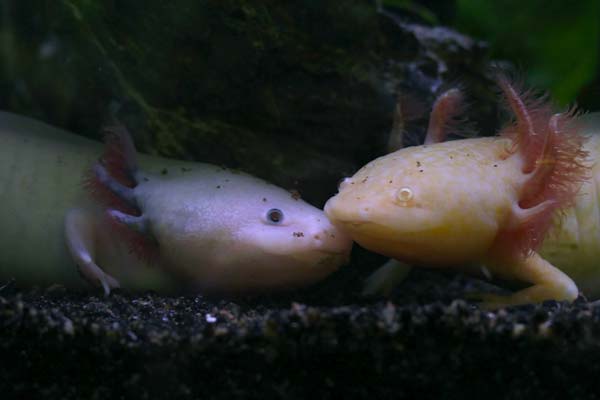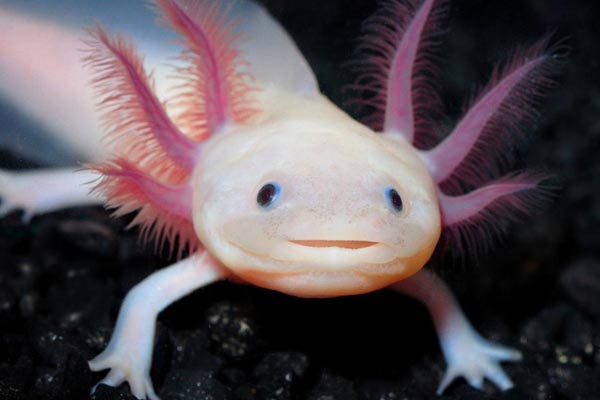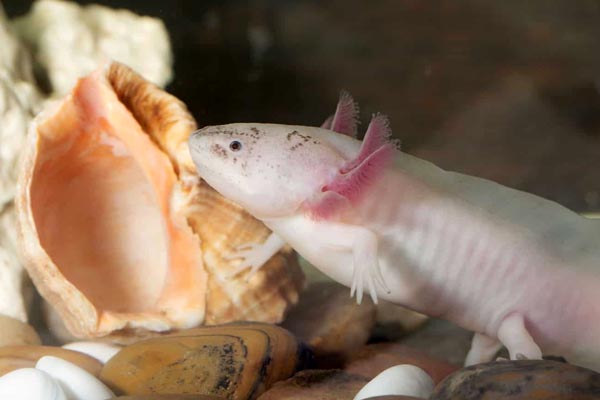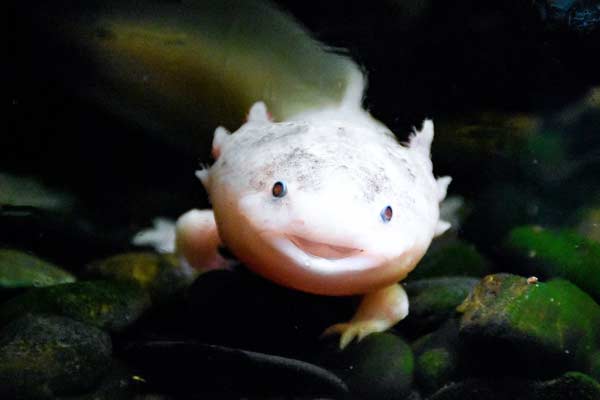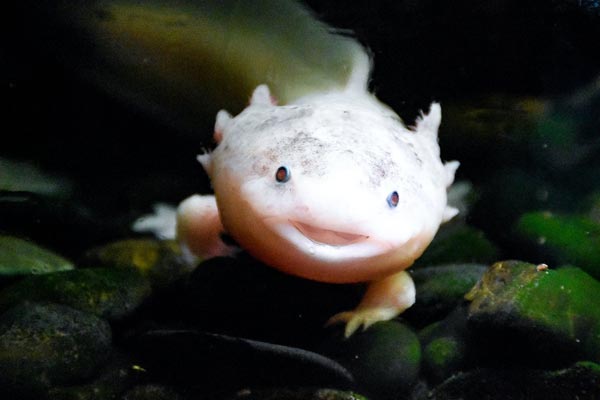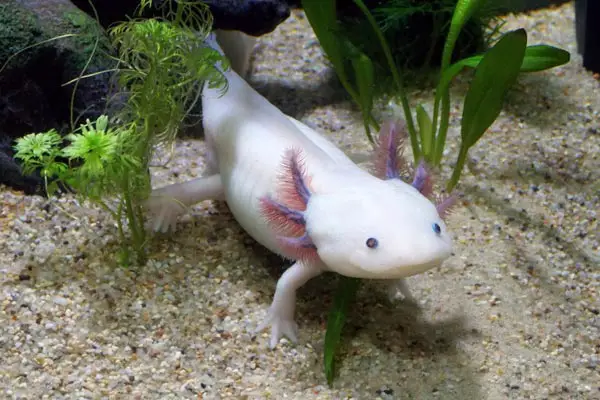Do Axolotls Have Teeth? Exposing the Secrets of Their Bite!
One of the most common questions people ask about axolotls is whether or not they have teeth. The answer is yes; axolotls have teeth both in their upper and lower jaws.
While some people may be concerned about the possibility of being bitten by an axolotl, there is no need to worry. Axolotl teeth are not sharp enough to penetrate the skin or cause serious injury.
Instead, they are used primarily for gripping and holding onto prey, which the axolotl will swallow whole. Axolotls are not known to be aggressive towards humans or other animals and are generally considered quite docile.
Anatomy and Types of Axolotl Teeth
Axolotls possess teeth in both their upper and lower jaws. The teeth are relatively simple in structure and function and are not differentiated or delineated.
Axolotl larvae usually have multiple rows of small, cone-shaped teeth on each side of their upper and lower jaws, which are shed and replaced often as the larvae grow.
Interestingly, partitioning the axolotl tooth-competent zones into prospective tooth fields also affects the odontogenic bands. The initiator-tooth germs of vomerine and palatine fields are among the first appearing teeth of the axolotl dentition, and these fields initially share a common odontogenic band.
However, during the development of the dentition, the palatine teeth become larger and more complex than the vomerine teeth.
Axolotl teeth lack the sharpness to cause serious injury, primarily for gripping and holding prey, which they swallow whole. They possess two rows of teeth in the upper jaw and one row in the lower jaw.
Axolotl teeth are jagged and have sharp edges, which enable them to grip and hold onto prey. The teeth are not used for chewing, as axolotls swallow whole food. Axolotl teeth are an essential feature of their anatomy, as they help catch and consume prey in their natural habitat.
Function and Usage of Axolotl Teeth
Axolotls use their teeth for gripping prey, not chewing, and have two rows on the upper jaw and one on the lower jaw. The teeth are not sharp and may not be visible due to their small size and lack of protruding edges.
During feeding, axolotls open their mouths wide, sucking in water and food while their rakers close the gill slits. They also use external gills for respiration and may employ buccal pumping for oxygen intake.
As Axolotl larvae grow, they develop multiple rows of small, cone-shaped teeth on their upper and lower jaws. These teeth consume tiny organisms in their aquatic environment and are shed and replaced as the larvae mature.
Axolotl teeth are not sharp enough to cause pain or break human skin, but they remain effective at gripping and holding onto prey.
Axolotl Teeth: Outer and Inner Dental Arcades
Axolotls are aquatic amphibians that belong to the family Ambystomatidae. They are known for regenerating lost body parts, including their teeth. Axolotl teeth are not sharp and may not be visible because they are small and do not have any protruding edges.
The axolotl dentition is a complex of five pairs of tooth fields arranged into the typically tetrapod outer and inner dental arcades. The outer dental arcade consists of premaxillary, maxillary, and dentary tooth fields.
The premaxillary tooth field is located at the front of the upper jaw, while the maxillary and dentary tooth fields are located in the upper and lower jaws, respectively.
The inner dental arcade consists of vomerine, palatine, and coronoid tooth fields. The vomerine and palatine tooth fields are located in the roof of the mouth, while the coronoid tooth field is located in the lower jaw.
Axolotls do not use their teeth to chew or tear apart their food.
Instead, they suddenly open their mouths and suck in water and food. The teeth in the outer and inner dental arcades of axolotls originate from common tooth-competent zones, one present in the mouth.
Feeding Behavior and Diet of Axolotls
Axolotls are carnivorous with a voracious appetite, displaying vacuum-like feeding behavior. They will consume anything that moves and fits into their mouths, swallowing prey whole without chewing.
In the wild, axolotls feed on small fish, insects, worms, and other soft-bodied prey. They are also known to eat tadpoles and mosquito larvae.
In captivity, axolotls can be fed on a meat-based diet consisting of earthworms, black/white worms, live daphnia, live brine shrimp, freeze-dried or frozen foods (e.g., bloodworms, brine shrimp), and salmon pellets.
It is important to note that axolotls should not be fed on a diet consisting solely of dry food as it can cause digestive problems. They should also not be provided food that is too large to swallow, as it can cause choking.
Axolotls are known for their slow metabolism and can go without food for a few days without any adverse effects. However, feeding them once a day or every other day is recommended, depending on their size and appetite.
Biting Behavior of Axolotls
Axolotls are known for their unique appearance and docile nature. However, like other animals, they may bite when they feel threatened or hungry. In this section, we will discuss the biting tendencies of axolotls and the precautions that can be taken to avoid bites.
Discussion on Axolotls’ Biting Tendencies
Axolotls have small, slender teeth in their upper and lower jaws, primarily for grasping prey. Their teeth are not sharp enough to penetrate human skin, so their bites are usually harmless. However, if an axolotl feels threatened, it may nip or bite as a defensive mechanism.
Axolotls are also known to bite when they are hungry and hand-fed. It is essential to avoid hand-feeding axolotls, as they may mistake fingers for food and bite accidentally.
Precautions and Safety Measures for Handling Axolotls to Avoid Bites
To avoid bites, handling axolotls with care and respect is crucial. Here are some precautions and safety measures that can be taken:
- Avoid hand-feeding axolotls.
- Use a net or cup to move axolotls from one tank to another.
- Wear gloves when cleaning the tank or handling axolotls.
- Do not startle axolotls or make sudden movements around them.
- Do not handle axolotls excessively or roughly.
Dental Health and Regeneration in Axolotls
Axolotls possess teeth in both their upper and lower jaws, but their teeth are not sharp enough to cause any serious injury to humans. However, it is still vital to maintain their dental health to prevent any potential dental issues.
Tips for Maintaining Dental Health in Axolotls
Maintaining dental health in axolotls involves feeding them a well-balanced diet appropriate for their size and age. Due to their carnivorous nature, prioritize a diet high in protein.
Offer live food like earthworms and small fish to keep their teeth clean. Be cautious of overfeeding to prevent dental issues, as obesity can occur.
Regular water changes and proper tank maintenance can also help to prevent dental issues. Dirty water can lead to bacterial growth, which can cause dental problems.
Common Dental Issues in Axolotls and Their Prevention
The most common dental issue in axolotls is overgrown teeth. Overgrown teeth can cause difficulty eating and can lead to other health issues. To prevent overgrown teeth, axolotls should be provided with appropriate objects to chew on, such as pieces of cuttlebone or aquarium-safe rocks. These objects can help to wear down their teeth naturally.
Another dental issue in axolotls is tooth loss. Axolotls can regenerate lost body parts, including teeth. However, it is essential to note that the regeneration process can take several weeks to months, and the new tooth may need to be stronger than the original.
Mention of the Regenerative Ability of Axolotls’ Teeth
Axolotls are known for their remarkable regenerative abilities, including their teeth. If an axolotl loses a tooth, the tooth will be replaced through regeneration. The axolotl will form a small bud of tissue called a blastema, eventually developing into a new tooth.
Biomimicry and Technological Applications of Axolotl Teeth
Biomimicry is taking inspiration from nature to solve human problems and create new technologies. With their unique ability to regenerate lost body parts, Axolotls have inspired scientists to study their teeth and explore potential technological applications.
Axolotl teeth are small and not sharp but powerful and tough. They are made up of a complex structure of different layers, each with another function. The outer layer is made of enamel, the hardest substance in the body. The inner layer is made of dentin, a tough, flexible material that can withstand much force.
Scientists have studied the structure of axolotl teeth to develop new materials that are strong, tough, and lightweight. For example, researchers have developed a new ceramic type that mimics axolotl teeth’ structure. This ceramic is solid and tough but also lightweight, making it ideal for various applications, from aerospace to medical implants.
In addition to materials science, axolotl teeth have also inspired research in robotics. Scientists have developed robots that mimic how axolotls move and use their teeth to grasp objects. These robots are incredibly dexterous and can be used in various applications, from manufacturing to space exploration.
Conclusion
In conclusion, axolotls feature teeth in their upper and lower jaws, primarily to grip and secure prey, which they consume whole. The teeth are not sharp enough to harm humans.
Interestingly, their oral and palatal dentition originates from a shared tooth germ, and the vomerine and palatine fields have a common odontogenic band during development.

